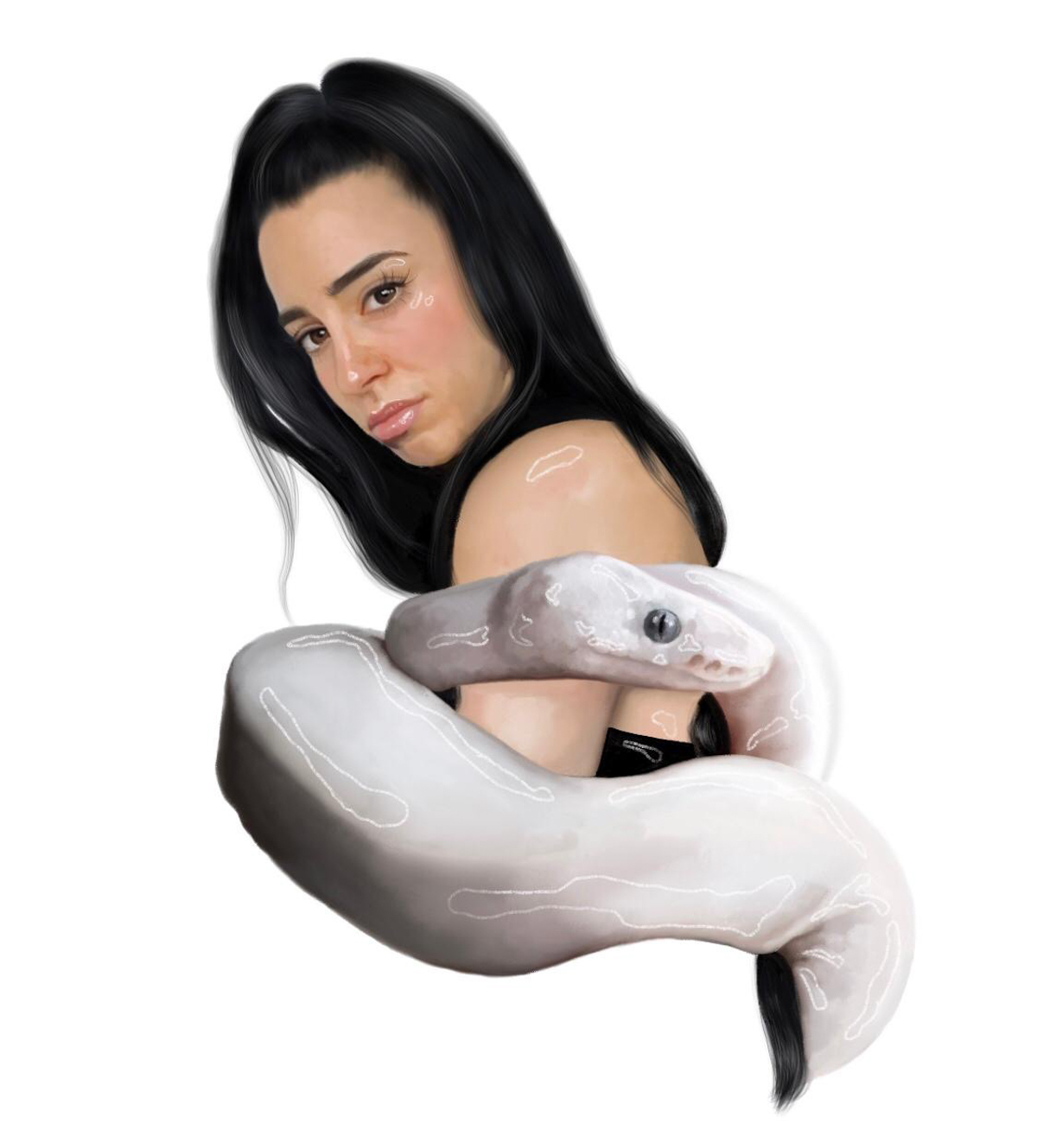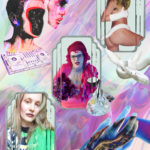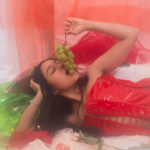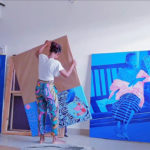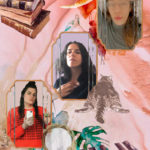The British chapter was first proposed by Ghanaian analyst Akyaaba Addai-Sebo in 1987 and has…
Nia Hefe Filiogianni
We talked to the London based artist about her artistic practice14 July 2020
Greek born, London-based, Nia Hefe Filiogianni (@nia_hefe) is a successful visual artist - with her work exhibited in cities like London, Athens and Los Angeles, as well as the founder and executive director of Cream Athens, a creative art platform based in London. The platform supports the relationship between the Greek and London artistic communities by holding events such as workshops, exhibitions and meetups.
Nia, how are you coping with the COVID-19 quarantine? Has it affected your work? [authors note: this interview was conducted during quarantine]
Nia: Strangely enough, the quarantine could be described as the best period I’ve had in the last two years. My routine before the quarantine started was a bit heavy. I’m kind of split in three pieces as I’m working full time at UAL (University of the Arts London) in the Central Brand team, part-time as an artist and I also run Cream Athens, a non-profit arts platform and gallery I founded back in 2017. My workload is so much that I feel like I need to invent more hours during the day to manage my expectations.
The quarantine has affected my work in a positive way as it’s given me the time to better plan my day, brainstorm and increase my productivity to the fullest. Also I was also able to prioritise my wellbeing for the first time and spend a lot of hours meditating, exercising and drawing which is something I would like to take forward.
Each of your previous artworks have been a wake up call, raising awareness for social issues. What messages do you want to convey with your art? Do you feel that your audience understands this message? And is having your audience understand your work’s deeper meaning important to you?
Nia: I mostly work around sculpture, illustration and painting. My work is heavily based in semiotics, organic forms, and sometimes text, as inspired by ancient Greek culture and myths as well as religious art with an attempt to re-contextualise’ classic symbols and reverse meanings. Nevertheless, the symbolic element in my work holds personal significance. I find it fascinating that we can still relate to ancient myths and philosophies.
I feel the work I make is for myself first and then for the rest of the world. I don’t mind if people sometimes don’t get the message. At least the work is honest both in form and subject. As Ann Veronica Janssen said, “nothing is more beautiful than a person’s own perception”.
That doesn’t mean that I’m not keen to receive feedback on my work though, especially when the viewer understands the message. I don’t think that art should be always self explanatory. The purpose of it is to put the viewer in a process of identifying familiar elements and meanings.
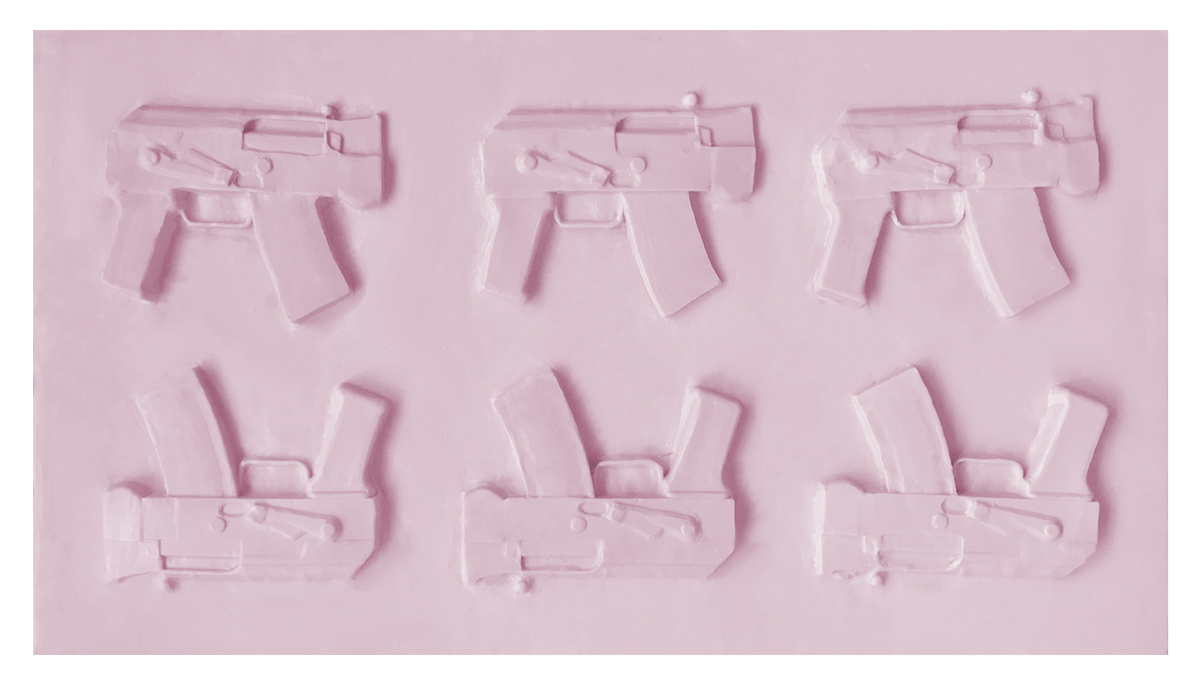
You left Greece to pursue a career in London. How hard has it been for you as a young artist to get used to a foreign country with a different culture? Do you think London is more open minded than Athens, and are there more opportunities in the arts in the UK than Greece?
Nia: Greece and London are two opposites, both with their pros and cons. I love Athens but I feel that the world is moving onwards and Greece is not quite there. As a recent graduate with a visual Arts degree back in 2014, there was not much you could do in Athens. Few opportunities, the same names in every exhibition catalogue and a competitive vibe is all I remember.
I left Athens in 2015 and moved to London to do my Masters at Central Saint Martins. Coming to London the very next day I had booked a collaboration with a gallery, and that made my transition easier. In the last two years I’ve worked with CNN Greece, Coningsby Gallery, UAL, Vogue Greece, Creative Debuts, Hot Sauce, Azeema Mag, and more.
London is a very alive and welcoming city with unlimited opportunities and definitely a more open-minded environment than Athens. Because of its multicultural character, it’s relatively easy to fit in the city’s vibes, get to know people and learn new things.
Some artists would argue that skills can be self-taught and studies are not necessary. What is your opinion about this? Have your degrees helped you with your artistic practice?
Nia: This is a really interesting question. Indeed, skills can be self-taught but a university can provide the right environment for an artist to be more daring with their next steps and development. Through the university you definitely create important connections and get valuable feedback for your projects by talented people from all over the world. If someone wants to study I would suggest having a solid plan or project in mind before applying that represents you and will make you stand out from the others.
Personally, I don’t feel that my first degree in visual arts and art history helped me develop my skills but it definitely gave me a good ground for my practice and understanding of the art world. Also my Masters in visual communication design opened new doors in the industry. After graduating I can admit that I had a lot of job offers in the industry.
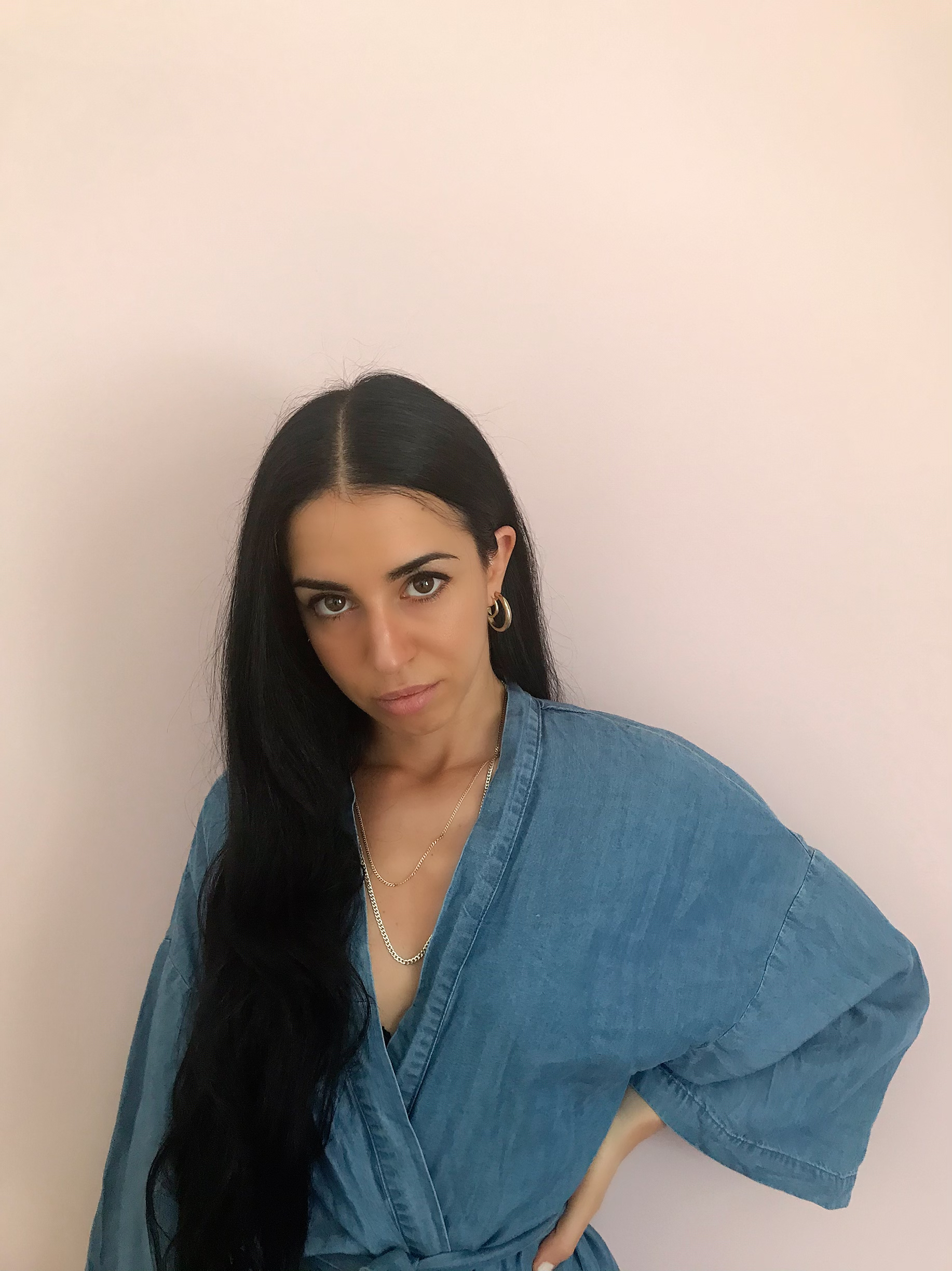
Most of your illustrations have to do with what look almost like old classical Greek or Roman depictions of the cis female form and historical events using a modern aesthetic. Is your work heavily based around cis female bodies, are these forms even cis female forms to you, and are you also interested in looking outside the gender binary?
Nia: Indeed I am inspired from ancient Greek culture and the dynamics of classical art; the detail in sculpture, the patterns in pottery, the emphasis on nudity and the human form. Many people have asked about the female forms in my art and I am always keen to see if I was drawing male forms, would anyone focus on this element of my work at all?
There is no doubt that we live in a world dominated by men and a widespread perception that if you don’t look like a ‘man’ you lack power (physical, social and economic) and that includes any existing gender identity. Having a look at what’s happening around the world, we still see the same unfortunate cases and still have to fight for fundamental human rights.
You own your body and no one can tell you who to be, how to look, or how much you are worth. The body carries the self and serves as a platform for exchange as it is the one that connects us with others. I mostly draw bodies and especially female forms because I support the freedom of the body and self to any possible extent.
The female forms I draw look like Ancient Greek figures, embracing my culture but not forgetting that women in Ancient Greece were considered second class citizens to men.
Before getting married, girls were subject to their father and had to obey his commands. After getting married, wives were subject to their husbands. Women were looked down upon by men and were considered no smarter than children. Although there were many notable women in ancient Greece, history books are usually silent on female accomplishments.
In 2017 I completed a project based on horrific historical events about the female body through a series of illustrations that later became silk scarves. Through my masters I also spent a year researching about the female body and how it was used throughout history. The project was really successful and received great visibility.
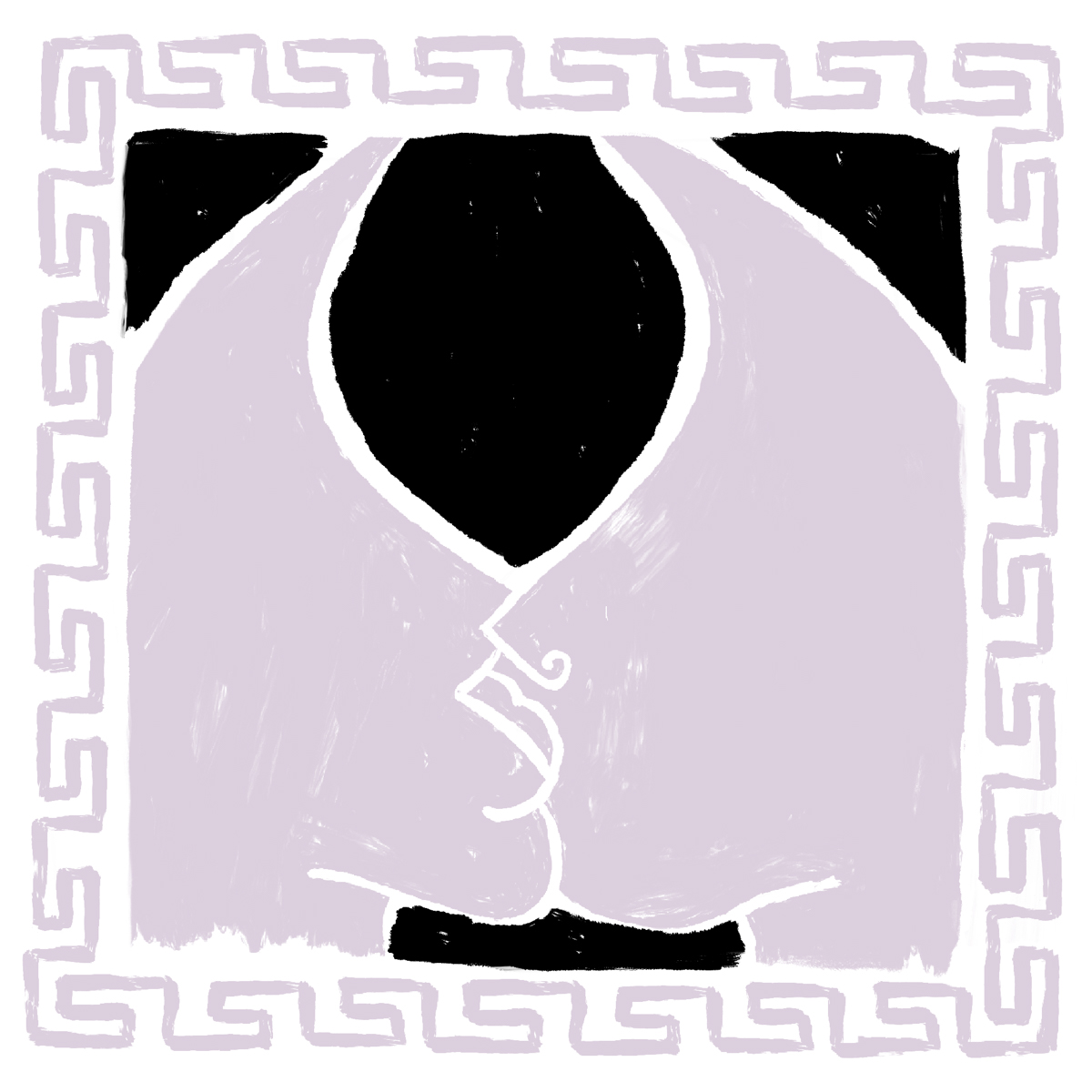
Is there any specific piece of yours that you’re most proud of? And if yes how you are connected with it?
Nia: A piece that is more special for me is ‘The Goose That Laid the Golden Eggs’, a two-meter latex panel inspired by the story by Aesop in which a married couple owns a goose that lays one golden egg every day. The couple, out of greed, killed the goose to obtain all the gold they thought to be inside, only to discover it was like all other geese.
The sculpture is a latex cast panel of 450 egg cases with a double-faced textural surface that aims to critically question current political systems, excessive desire, ephemerality and the idea of an individual’s expectations from society and vice versa. I’m really connected with this piece as it reminds me of my motherland, Greece. Greece has been recognised as the place of corruption in politics since the beginning of the Greek crisis in 2010. Based on Aesop’s fable, this piece explores the notion of greediness in human nature and its social basis.
Another piece that I enjoy is a one and a half meter dyed cotton collage panel called ‘The allegory of the cave’. In his allegory, Plato describes some prisoners chained in a cave experiencing the world through the shadows reflected on the wall which represent their reality. The prisoners have become comfortable and familiar with this way of living, not realizing they are in captivity.
Based on Plato’s allegory this piece represents the metaphorical imprisonment of people to their social image and stereotypes that follow. Through deceptively simple visual language my piece explores how the allegory of the cave relates to Greek modern society in an attempt to question the idea of social freedom that has become reality.
Why do you use pastel and latex for your art? What makes you want to work with these materials?
Nia: The materials I usually work are wax, fabrics, silicone and concrete. I pay attention to the surface in all forms.I love the rawness of the materials, especially of concrete and textiles. The patterns and palette I use usually correlate with my perception of my homeland.
I think that pastel colours and especially pink is the most characteristic element of my pieces. Pastel colours calm my inner self and add a soft and sensual character in my work. I wouldn’t want to talk about pink as a colour connected and liked only by women but a colour that as a human being I am attracted to. Pink in Japan has masculine associations as it is linked with the samurai and fallen warriors.
In the 1960’s Alexander Schauss observed people’s mood and colour together. He found that when simply staring at pink, subjects would display a remarkable drop in heart rate, pulse and respiration. He also suggested that this colour is used in prisons and indeed when inmates were exposed to the colour for less than 15 minutes, violent behaviour dropped to zero!
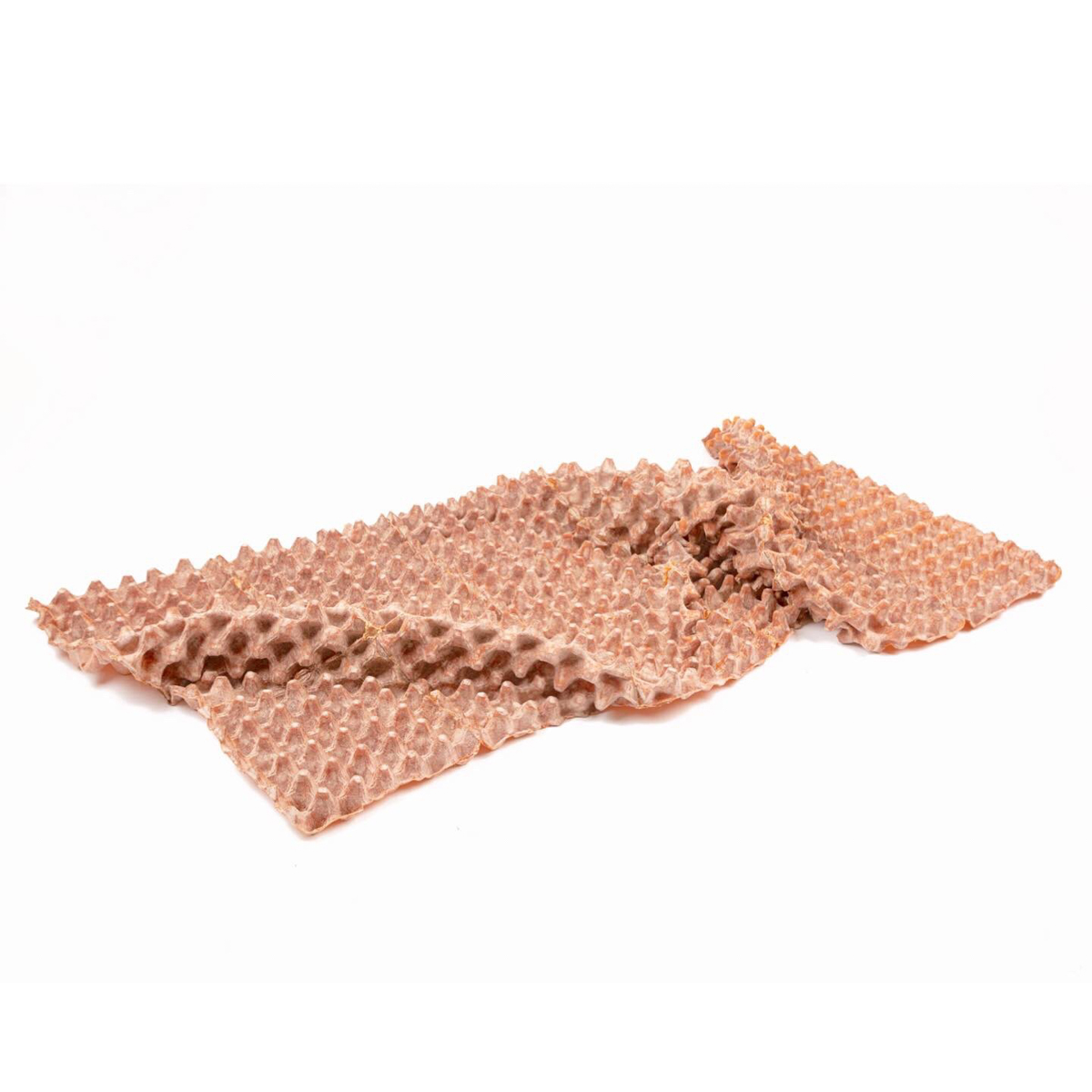
Who is your target group? What kind of people is your art meant to speak to?
Nia: This is a tricky question. I suppose that my target audience is a group of people that feel or understand the pieces I make – or they just make them happy. I find that the people that usually buy my pieces are the ones that sympathise with the stories behind my work
What motivated you to start your own platform?
Nia: Cream Athens was founded in Athens in 2017 through my desperate and mixed feelings for the art scene in Athens and the luck of opportunities for emerging artists. Finding it hard as a graduate to develop my career in my country I decided to create myself what I was looking for.
I later moved to London and so Cream Athens did as well. There I built a powerful network of art professionals with a variety of exhibitions, workshops and events on our [Greek] history. Our key objectives are collaboration and mutual support with other organisations, galleries, studios and individuals within the creative industry. We support emerging and established artists and offer development opportunities to individuals within our creative community.
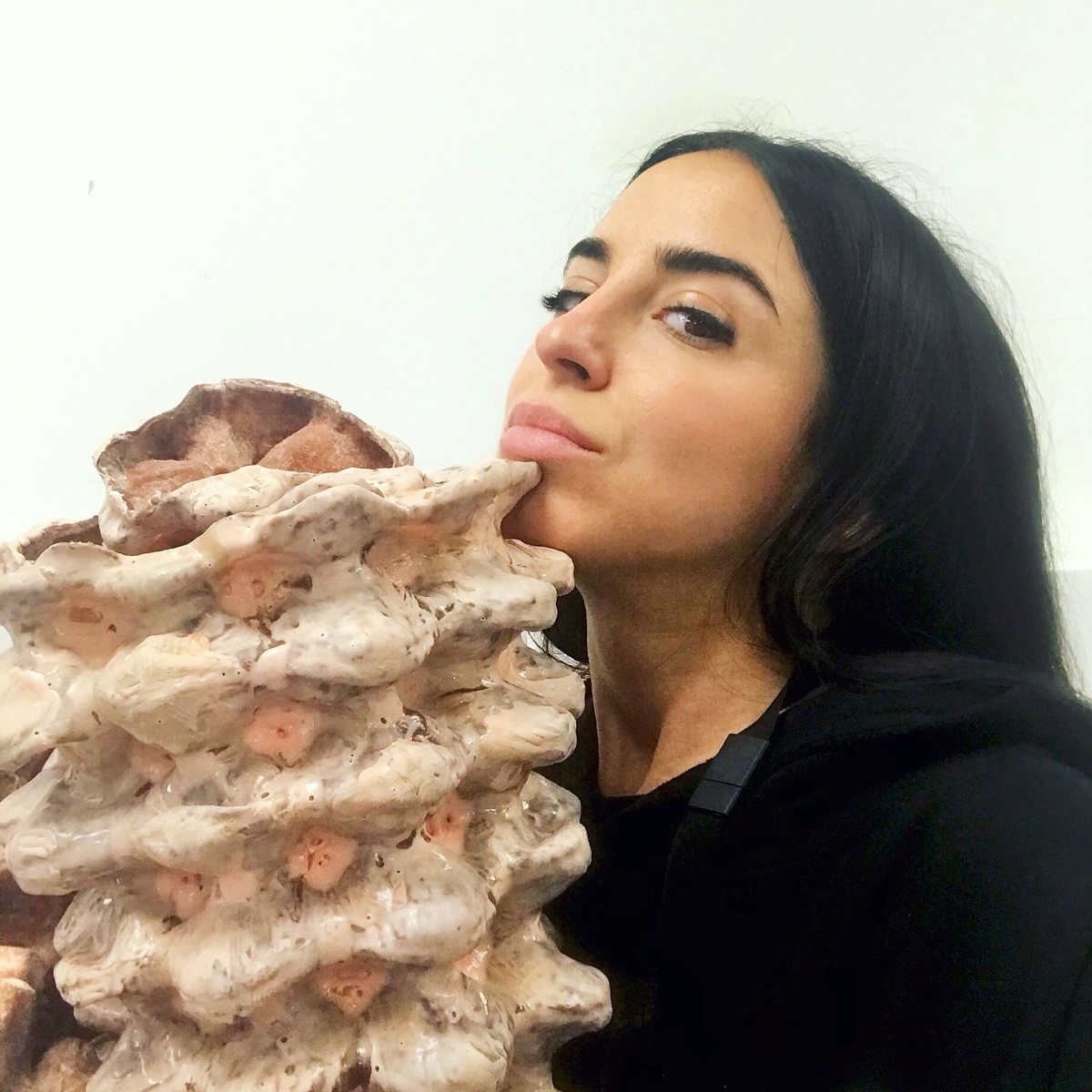
How does digital art compare with traditional art? Do they communicate with the viewer differently? What are the main differences that you have discovered using digital methods?
Nia: This is a really interesting question as I work both traditionally to do my sculptures but also digitally to do my illustrations. I would define traditional art as a series of techniques and methods that have been used for thousands of years and tend to explore complex topics, just because the actual material is part of the work. Digital art is something fresh that definitely speeds up the process in my experience. You can delete, redo, create different versions, test, finalise and post your work on Instagram in no time.
Born in 1990, I feel that traditional art has more value and trueness just because it’s the hard way of doing things. This is just my opinion though, based on my perception and experiences. No matter if I personally prefer digital art or not, time goes on and we go with it as well as art.
Are there any future projects you want to share with us?
Nia: At the moment I am working on a series of drawings and concrete sculptures that aim to challenge the ways we use time. As I’m always interested in the ‘here and now’ of things, I feel that it’s really vital to understand the importance of time, and the decisions an individual makes in their life. I’m planning to show these pieces in a solo exhibition next year in London.
It’s really hard to add things to my calendar at the moment due to the pandemic as most of my upcoming exhibitions and collaborations have been postponed for 2021, but I’m really positive for the year coming.
_
Original artwork and photographs provided by Nia Hefe Filiogianni. Follow Nia on Instagram to keep up with her work. For more Art & Culture, click here.



